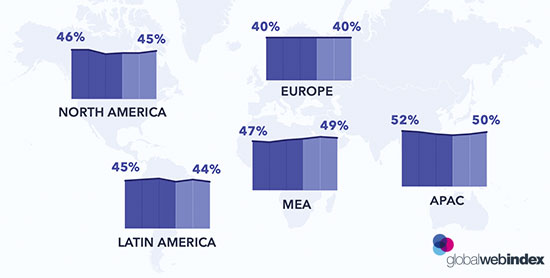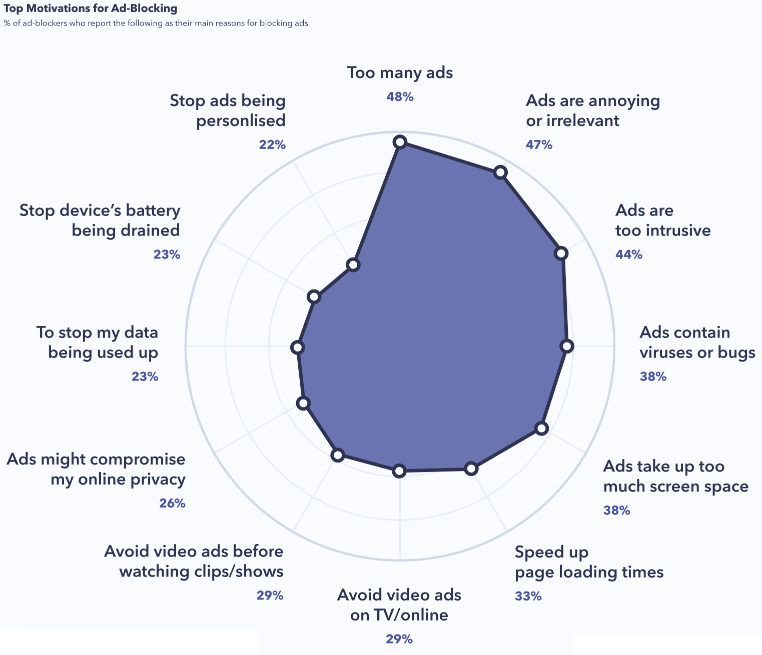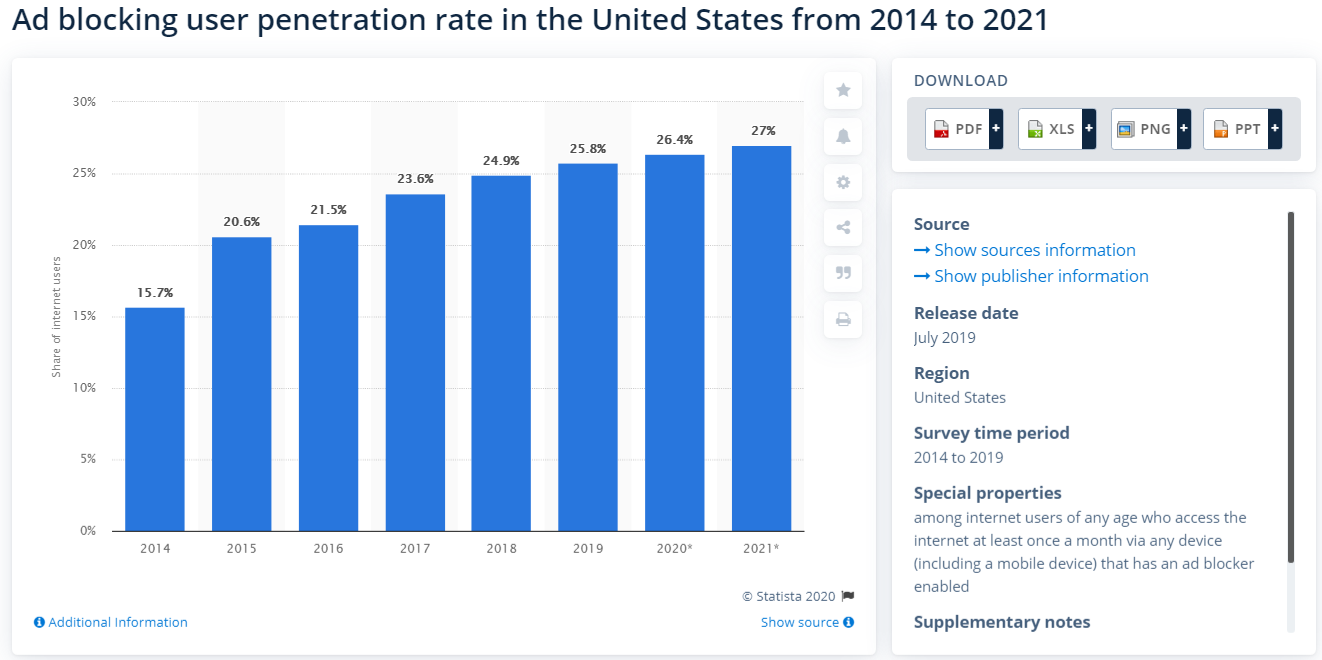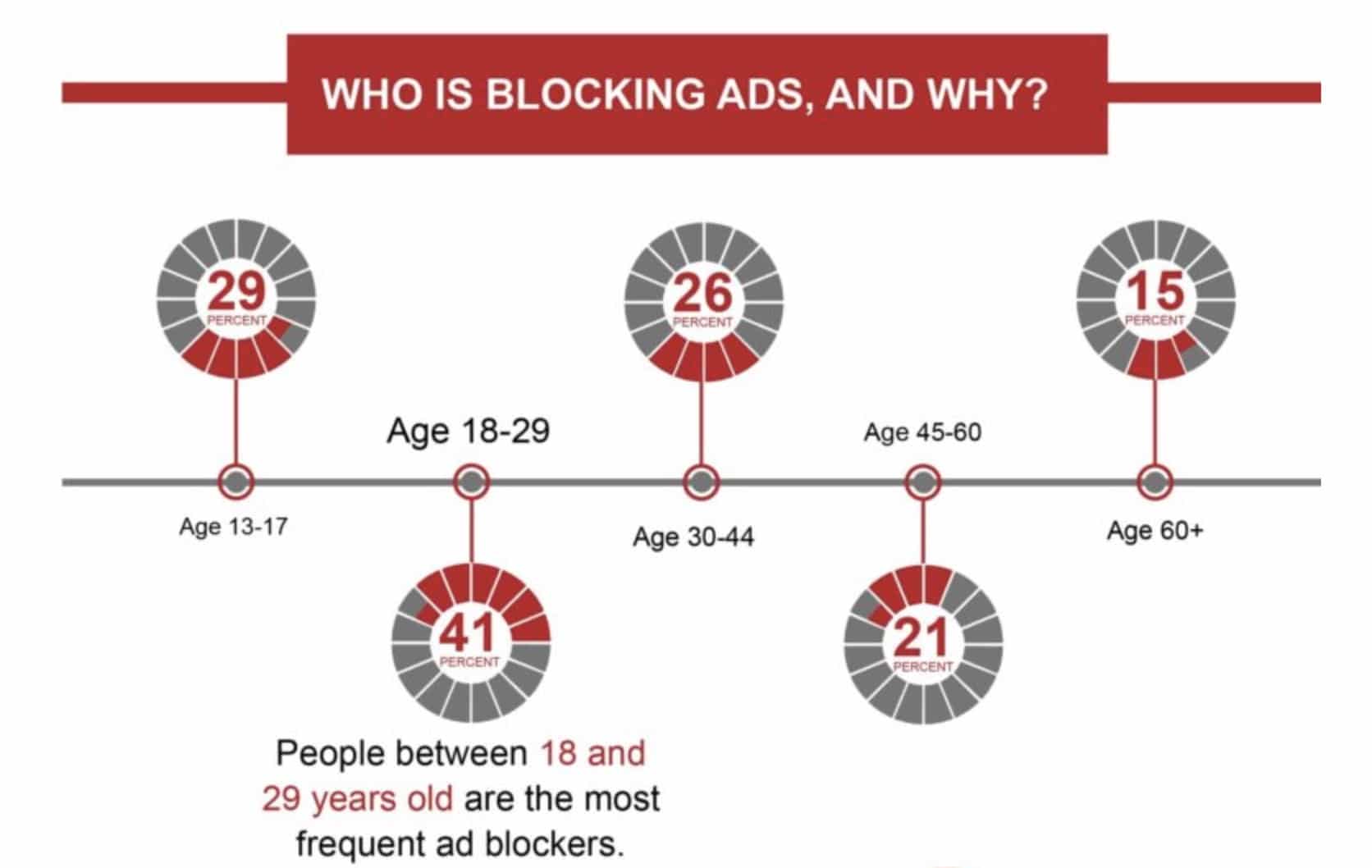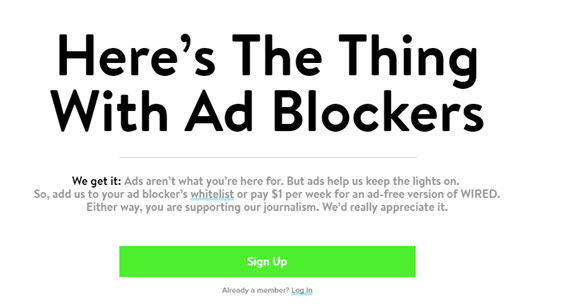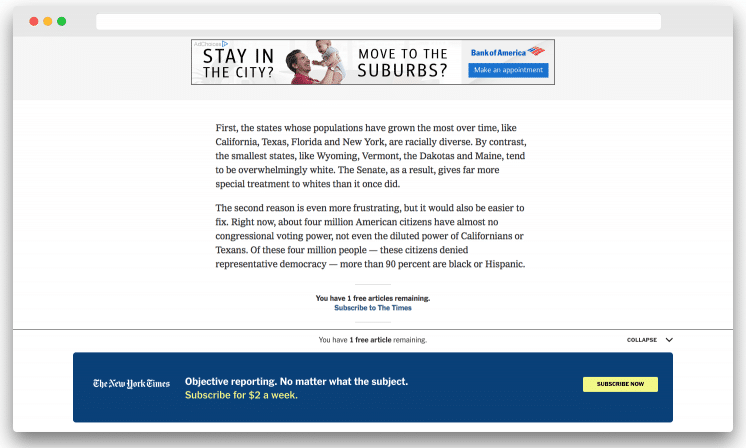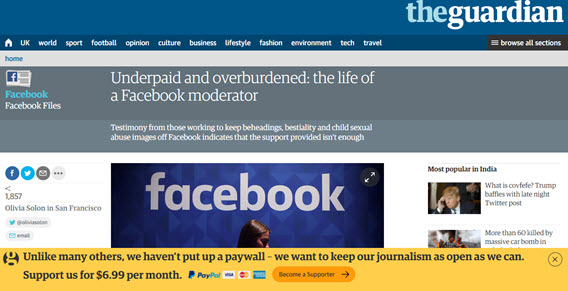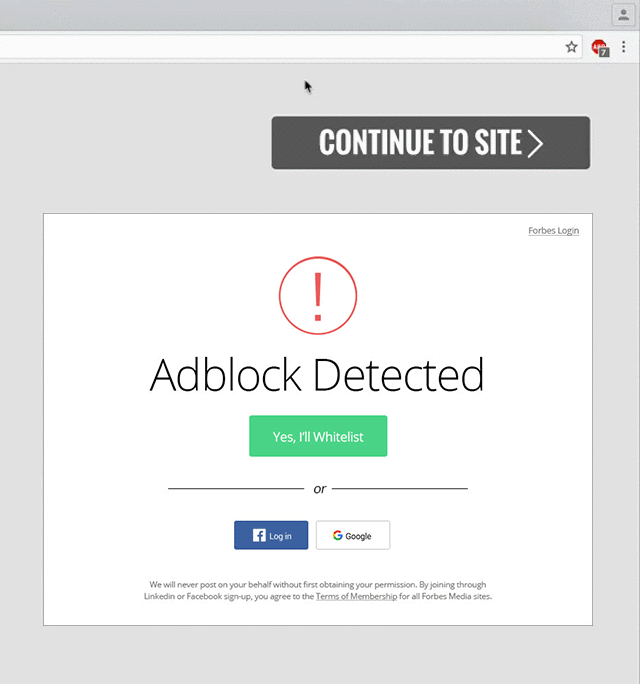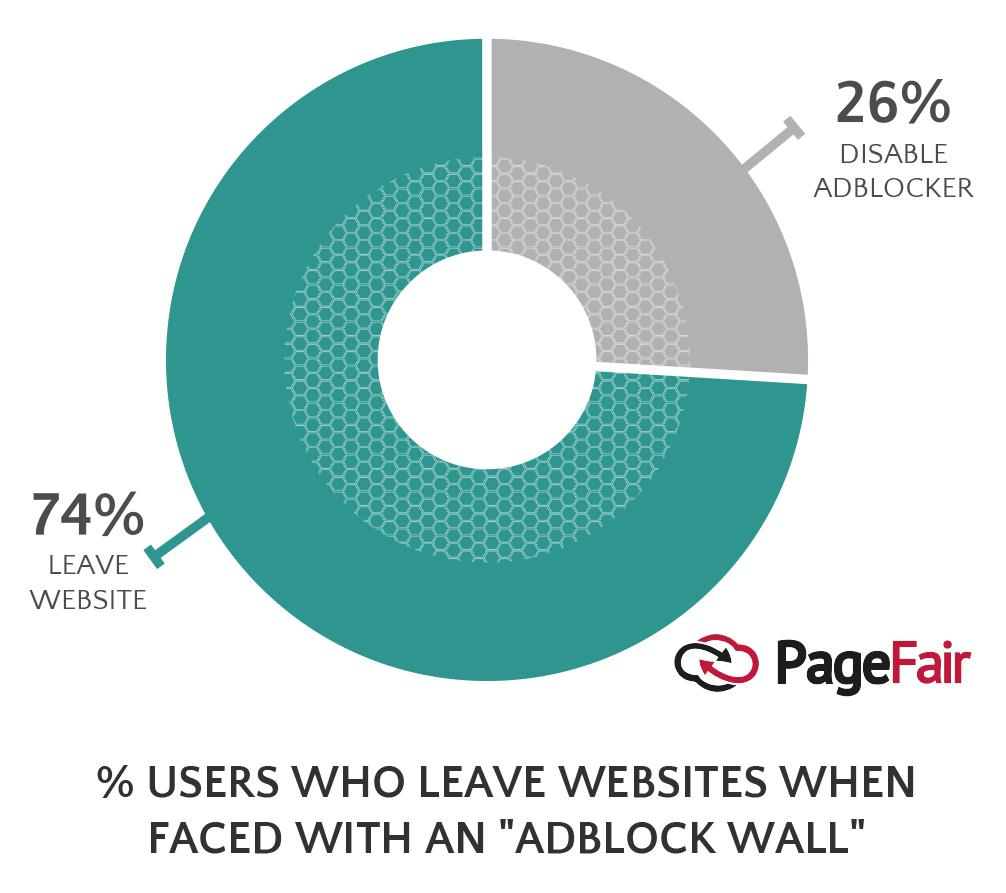If you're a blogger or someone who runs a WordPress blog or website, there is a huge opportunity for you to monetize it through third-party advertising networks such as AdSense and Media.net.
However, with the advent of ad-blocking software such as AdBlock Plus, uBlock, Ghostery, and others, generating revenue through advertising has become a challenge for most website owners.
Another
research conducted by Ovum reveals that digital publishers will lose roughly $35 billion to ad-blocking software by the end of 2020.
Overwhelming, isn’t it? For a blogger or website owner whose primary source of revenue is from third-party advertisements, this may pose a threat to your survival. Well, don't let that discourage you because there is still a chance to fight back against ad blockers.
In this blog post, we’ll discuss the different ways to combat Ad Blockers on a WordPress site, but before, let's understand what exactly is an ad clocker, why people block ads, and more.
What Exactly Is An Ad Blocker?
Simply put, an ad blocker is a kind of software designed to automatically detect and block ads from being loaded on a web page on the user’s browser window. The idea is to remove clutter, speed up page loading time, and ultimately deliver users a better and smoother browsing experience along with saving their data and protecting them from malicious websites. Consequently, in place of intrusive and annoying advertisements, users simply see a blank space.
Since an ad blocker stops any ad impressions, you as a publisher are not able to generate any revenue from the ads placed on your site. Typically used as a browser extension, ad blockers also come in several different forms, like:
- A mobile application
- A feature in the Anti-virus
- The firewall of the visitor’s computer or network
Moreover, we should never overlook the fact that modern web browsers, such as Google Chrome, Opera and Brave, now come prepackaged with ad-blocking capabilities!
Why Do People Block Ads?
Probably because people don’t come to your blog or website to see ads! As a publisher, you might not understand why your visitors block ads, but if you try to walk in the user’s shoes, you’ll find that a disrupted browsing experience is the main reason why some people block ads.
According to an
infographic designed by leading market research firm GlobalWebIndex, the top three motivations for ad blocking are:
- Too many ads
- Annoying, irrelevant or poorly-placed ads
- Too intrusive ads
So, with the
ever-growing number of ads on websites, it’s not rocket science to understand why a huge chunk of your visitors would want to block ads on your site.
Why Do You Need to be Concerned About Ad Blockers?
Simply because they hurt your business, not only in terms of just revenues but also in terms of other things as well. While ad blockers are designed essentially to automatically detect and disable advertisements on a website, sometimes they also prevent necessary codes, scripts, and cookies from loading on the browser.
For instance, an ad blocker may prevent the email opt-in popup, which you’re using to increase your subscriber count, from showing up on the website. Thus, even if you don’t monetize your website, ad blockers can still negatively affect your business in many ways. If you want to see the impact of ad blockers, just install an ad block extension in your web browser and see yourself how your website functions as you browse it.
Another reason why you must think about dealing with ad blockers is the continuously growing usage of ad-blocking software. In 2019, roughly 25.8% of internet users in the U.S. alone blocked advertising and this figure is expected to reach 27% by the year 2021 - according to
Statista.
Apart from that, you can’t ignore the constantly growing popularity of AdBlock Plus, which is the world's number one free adblocker. According to a
report, AdBlock Plus has been downloaded a billion times since its first launch in 2014 and it currently has over 100 million active users worldwide.
Thus, keeping all these facts and statistics in mind, you can't afford to sit on this.
How to Know If Your Website/Blog is Affected by Ad Blockers?
Well, blogs and websites that rely solely on third-party ad networks like AdSense are most affected by ad blockers. To identify whether your one is affected, you simply need to compare your Google AdSense (or other ad networks) Pageviews with your Google Analytics Pageviews. If there is a difference between the two, you know it. Alternatively, you can also use tools like
Detect Adblock and
Admiral Advanced Adblock Analytics for the same!
According to
various reports from Adobe and PageFair, ad-block users are typically more tech-savvy. In fact, visitors between the age of 18 and 29 are the most frequent ad blockers as they are young and smart enough to know what an ad-blocking software is and how to use it.
So if your audience is tech-savvy, chances are high that your blog will get affected by ad blockers.
How Can You Deal with Ad Blockers as a WordPress Publisher?
Now if you found your WordPress site getting affected by ad blockers, there are several different ways you can deal with ad-blocking software:
The Passive Approach: Notify and Request Users to Whitelist
In this approach, it depends on the readers whether or not they whitelist your WordPress site. There are several measures that you can take in this regard:
Simply Ask to Whitelist: You can kindly request your users to whitelist your WordPress site in exchange for high-quality content and non-obtrusive ads. However, you don't know how effective this appeal would be.
Sell an Ad-Free Membership: Another alternative is to create and promote the ad-free version of your WordPress site. You can request users to either whitelist them or pay a fixed recurring amount in exchange for an ad-free experience.
Some well-known examples of implementing this approach are:
Wired:
If possible, you can allow users to browse your website even with the ad blocking software enabled as the PCGamer did.
PCGamer:
Add a Paywall to Your Site: This method is similar to the ad-free Membership option and called the paywall subscription model.
In this method, you put up a barrier for users to access your website’s content. Users can access a certain number of articles with advertisements for free during a certain period of time and thereafter, they’re required to purchase a subscription to get unlimited access to your website’s content and enjoy an ad-free experience.
The New York Times (NYT) does this pretty well!
Create a Non-Intrusive Campaign: Another passive option is to politely ask your users for financial support or donation. If your readers find your content valuable and informative, they would surely like to help you survive.
For example, the Guardian runs a non-intrusive ad-block detection campaign through an easily dismissible floating bar that motivates users to support them with the donation and continue browsing through the ad-free site.
Listed below are a few WordPress plugins you can use for Passive Approach:
The Aggressive Approach: Block Ad Block Users
This is really a very aggressive strategy where you block users from accessing your content entirely. In other words, you force users to disable their adblockers to view your content.
Forbes is a perfect example of leveraging the aggressive approach. Instead of asking users to pay, they entice users to either whitelist them or create a free account to browse through the ad-free version of their website for a certain period of time.
And the best thing, when you hover over the green button, a gif image is shown to explain how you can whitelist their site on ad blockers.
Although the aggressive approach opens up a whole new world of possibilities to maintain and increase your revenue, you should think twice before you implement it. This is because it may turn away users from your site, which can negatively affect your website’s traffic count. Studies show that
74% of users leave websites when they encounter an adblock wall.
So it is recommended you go with the Passive Approach!
The Best Option: Diversify Your Revenue Streams
Now, if you don’t want to fight ad blockers and get your website's revenue affected in any manner, the best thing you can do is not relying on third-party ad networks like Google AdSense. Follow the tips given below to avoid ad-block losses:
Switch to Native Advertising: Native Advertising is one of the best ways to prevent ad blockers from affecting your revenue. In this method, you host all the advertisement resources on your own server. In the simplest terms, you sell ads directly through your website or blog. Needless to say that this approach doesn’t work with a third-party advertising network like AdSense, which serves ads from external sources.
Allow Sponsored Content and Reviews: Another way of not fighting with ad blockers is to monetize your website or blog through paid content. You can accept sponsored content, review products, and guest posts in exchange for a payment. Just make sure you don’t compromise with the quality of the paid content.
Sell Digital Products: In this approach, you’d need to create and sell high-quality and engaging long-form content like eBooks, white papers, checklists, online courses, etc, through your website on a one-off payment or a subscription basis. Likewise, you can develop and sell a problem-solving extension or tool as well.
Rely More on Affiliate Marketing: According to a
report, over 81% of brands and 84% of publishers are already leveraging the power of Affiliate Marketing. It is a way to make money by referring to a service or product to your users.
Affiliate Marketing is a part of Native Advertising and can be a great source of revenue for your site. Best of all, if you’re running Adsense or similar alternatives on your site, you could have your ads fallback to affiliate ads in case an ad-blocker is detected.
Try Off-site Ads: Your WordPress blog or site isn’t the only place where you can show up advertisements. Try other good options as well, like newsletters, social media platforms, etc. Even though they’re not totally block-proof, they are really good options to generate revenue.
An Alternate Option: Create a Mobile App
Since ad blocking software disable only browser-based advertisements across all devices, a native mobile app can be your best companion to bypass ad blockers. A native mobile app doesn’t rely on the browser and therefore it cannot be affected by any ad blocking software. You can still monetize your content through
a variety of app monetization models, including but not limited to:
- In-app purchases
- In-app advertising
- Paid app downloads
- The freemium upsell
- Subscription paywall

